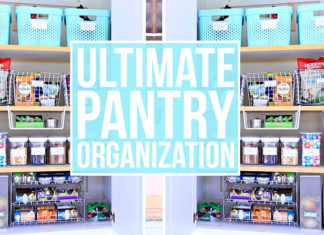In today’s world, it is very difficult for children and parents to maintain a healthy and smart diet due to the busy schedule. This makes it a hard situation to eat homemade meals or food every day. Mostly kid’s diets involve a lot of junk and convenience-based food.
But in general, these foods can be unhealthy for kids. It can have a negative effect on your child’s health. Certain unhealthy eating can continue into early childhood or adulthood. They can even develop into lifelong diseases in kids.
In this article, we will focus on brief information about the healthy child’s diet (R) and about the dietary guidelines for children. So, let us focus on details about the healthy diet for kids.
Healthy Diets For Kids:

Nutrition for kids is based on some principles as nutrition for adults. Everyone needs the same and certain types of nutrients like vitamins, minerals, carbohydrates, protein, and fat.
Children, however, need specific and different amounts of nutrients at different ages of their growth. The children who eat healthy meals find the right balance between not so good foods and good foods.
Educating the children about proper nutrition or diets is the first step towards putting them on the right path to a healthier well being. You can have direct communication with the children for expectations on the dietary (R) plan.
You must support and guide them in teaching about the various food groups that form the food pyramid and how to label each food according to their health benefit and overall wellness.
There are also some fun nutrition facts for kids that would help them make good choices most of the time. Those children who understand the difference between health and nutrition are the ones who are motivated to make a wise choice that follows them into adulthood and create a lifetime asset of lasting well-being.
Benefits of Healthy Eating In Early Childhood:

Healthy eating can help children to maintain a healthy weight, and avoid certain health problems. It stabilizes the level of energy in kids and sharpens their minds too.
A healthy and smart diet also have a profound effect on a child’s sense of mental and emotional well-being in his day to day life. A healthy diet has a direct relation that helps to prevent certain conditions such as depression, anxiety, bipolar disorder, schizophrenia, and ADHD in kids.
Eating well and healthy support a child’s healthy growth and development into adulthood and may even play a role in lowering the risk of suicide in young teens. If your child has already been diagnosed with a mental health problem, a healthy diet can help your child to manage the symptoms and regain control of their health.
It’s important to remember that your kids aren’t born with a craving for french fries and pizza and an aversion to broccoli and carrots. This conditioning happens over time as kids are exposed to more and more unhealthy food choices (R).
Moreover, it is possible to reprogram your children’s food cravings so that they crave healthier foods instead of unhealthy foods. The sooner you introduce healthy, nutritious choices into your kids’ diets, the easier it becomes to develop a healthy relationship with food that can last them a lifetime.
Healthful Eating Diets has Many Benefits for Children. It can:
- Stabilize their energy.
- Improve their minds.
- Even out their moods.
- Help them maintain a healthy weight.
- Help prevent mental health conditions. These include depression, anxiety, and ADHD.
However, having a healthy diet and focusing on nutrition are some of the simplest and most important ways to prevent the onset of disease. Healthy eating helps to prevent many chronic diseases in kids. These include obesity, heart disease, high blood pressure, and type 2 diabetes. Around half of all Americans have one or more of these illnesses (R).
Healthy eating habits are more likely to stay with you if you learn them as early as a child. That’s why it’s important that you teach your children good habits now itself about the diets.
It will help them stick with these eating patterns and habits. This will help them avoid developing chronic diseases like those listed above, as a child or as an adult.
Child Nutrition Guidelines:

Check out some of these nutrition basics for girls and boys at various ages, as per based on the latest Dietary Guidelines (R) for Americans healthy eating guidelines.
1. Consider This Nutrient Dense Food:
- Protein. Choose food like seafood, lean meat and poultry, eggs, beans, peas, soy products, and unsalted nuts and seeds as they are rich in high protein.
- Fruits. Encourage your child to eat a variety of fresh, canned, frozen or dried fruits rather than focusing on fruit juice. If your child drinks juice, make sure it’s 100 percent juice without added sugars and limit his or her servings. Look for canned fruit that says it’s light or packed in its own juice, which means it’s low in added sugar. Just keep in mind that one-quarter cup of dried fruit counts as one cup equivalent of fruit. When consumed in excess, dried fruits can contribute extra calories too.
- Vegetables. Serve a variety of fresh, canned, frozen or dried vegetables to your kids. Make sure you provide a variety of vegetables, that include dark green, red and orange, beans and peas, starchy and others, at least once each week. When selecting canned or frozen vegetables (R), look for options that are lower in sodium.
- Grains. Choose whole grains, such as whole-wheat bread, oatmeal, popcorn, quinoa, or brown or wild rice instead of the refined grains such as white bread, pasta, and rice.
- Dairy. Encourage your child to eat and drink fat-free or low-fat dairy products, such as milk, yogurt, cheese or fortified soy beverages.
Aim to Limit your Child’s Calories from the diet:
- Added sugar. Limit added sugars in any of the food or diet in kids. Naturally occurring sugars, such as those in fruit and milk, are not added sugars. Examples of added sugars include brown sugar, corn sweetener, corn syrup, honey, and others.
- Saturated and trans fats. Limit saturated fats. Saturated fats mainly come from animal sources, such as red meat, poultry, and full-fat dairy products. Look for ways or replace saturated fats with vegetable and nut oils, that provide essential fatty acids and vitamin E. Healthier fats are also naturally present in olives, nuts, avocados, and seafood. Limit trans fats by avoiding foods that contain partially hydrogenated oil.
2. Daily Guidelines for kids as per their Age:
The dietary guidelines for children vary as per certain age and gender, it follows as
|
Ages 2 to 3: Daily guidelines for girls and boys |
|
|
Calories |
1,000-1,400, depending on growth and activity level |
|
Protein |
2-4 ounces |
|
Fruits |
1-1.5 cups |
|
Vegetables |
1-1.5 cups |
|
Grains |
3-5 ounces |
|
Dairy |
2 cups |
|
Ages 4 to 8: Daily guidelines for girls |
|
|
Calories |
1,200-1,800, depending on growth and activity level |
|
Protein |
3-5 ounces |
|
Fruits |
1-1.5 cups |
|
Vegetables |
1.5-2.5 cups |
|
Grains |
4-6 ounces |
|
Dairy |
2.5 cups |
|
Ages 4 to 8: Daily guidelines for boys |
|
|
Calories |
1,200-2,000, depending on growth and activity level |
|
Protein |
3-5.5 ounces |
|
Fruits |
1-2 cups |
|
Vegetables |
1.5-2.5 cups |
|
Grains |
4-6 ounces |
|
Dairy |
2.5 cups |
|
Ages 9 to 13: Daily guidelines for girls |
|
|
Calories |
1,400-2,200, depending on growth and activity level |
|
Protein |
4-6 ounces |
|
Fruits |
1.5-2 cups |
|
Vegetables |
1.5-3 cups |
|
Grains |
5-7 ounces |
|
Dairy |
3 cups |
|
Ages 9 to 13: Daily guidelines for boys |
|
|
Calories |
1,600-2,600, depending on growth and activity level |
|
Protein |
5-6.5 ounces |
|
Fruits |
1.5-2 cups |
|
Vegetables |
2-3.5 cups |
|
Grains |
5-9 ounces |
|
Dairy |
3 cups |
|
Ages 14 to 18: Daily guidelines for girls |
|
|
Calories |
1,800-2,400, depending on growth and activity level |
|
Protein |
5-6.5 ounces |
|
Fruits |
1.5-2 cups |
|
Vegetables |
2.5-3 cups |
|
Grains |
6-8 ounces |
|
Dairy |
3 cups |
|
Ages 14 to 18: Daily guidelines for boys |
|
|
Calories |
2,000-3,200, depending on growth and activity level |
|
Protein |
5.5-7 ounces |
|
Fruits |
2-2.5 cups |
|
Vegetables |
2.5-4 cups |
|
Grains |
6-10 ounces |
|
Dairy |
3 cups |
3. Make Meal Time A Priority:
Sitting down together at the table as a family is an important part of establishing healthy eating habits. But trust me, it’s more than just eating together. Mealtimes are a chance to:
- Provide your kids comfort. Children thrive on routine life. Knowing they have dinner or other meals with their family regularly will help them to feel safe.
- Talk to your kids. Show interest in what’s going on in their lives and many more. Tell your kids what’s going on in your surroundings and life. Build stronger and open connections among your family members.
- Monitor their eating habits. The bigger kids and teenagers spend more time eating at school or at friends’ houses. Use this time to watch what and how they eat. If you find there is anything you can do to encourage better habits, do it.
- Set an example for your child. If you prepare and eat healthy foods yourself then your child will eat healthier too. Avoid obsessive calorie counting. Don’t talk negatively about yourself. Your child could adopt the same attitudes too. This could lead him or her to develop body image issues or negative associations with food.
4. Find Healthier Food Alternatives:
Find a few alternatives to unhealthy items in your healthy child’s diet. Slowly start adding one after another until your kids adopt a healthier food choice. The certain foods are-
Instead of Try
|
Whole milk |
Low-fat milk |
|
Soda |
Water or flavored sparkling water |
|
White bread |
Whole wheat or whole grain bread |
|
Ice cream |
Homemade smoothie |
|
Butter |
Olive oil |
|
Cream-based salad dressings or pasta sauce |
Oil-based dressings or vegetable-based pasta sauce |
|
Potato chips |
Baked chips or nuts |
5. Be Smart About Fats:
Kids need healthy fats (R) and plenty of them in their healthy diet. Healthy fats help kids to stay full, concentrate better, and improves their mood and so on.
Healthy Fats
Monounsaturated fats, you get it from olive oil, avocados, nuts (like almonds, hazelnuts, and pecans), and seeds (such as pumpkin, sesame).
Polyunsaturated fats, including Omega-3 fatty acids, found in fatty fish, such as salmon, herring, mackerel, anchovies, and sardines, or in flaxseed and walnuts.
Unhealthy Fats
Trans fats are found in vegetable shortenings, some margarine, crackers, candies, cookies, snack foods, fried foods, baked goods, and other processed foods made with “partially hydrogenated” vegetable oils. No amount of trans fat is safe.
6. Make Fruits and Veggies More Appealing:
The very first move to making fruits and veggies appealing in the kid’s diet is to get rid of unhealthy sweet and salty snacks. Your child might want a salty snack, such as potato chips, burger, and other foods. Try and avoid giving them.
- Keep fresh fruit on hand. Keep the whole fruit out where your child can see it. Just a bowl with apples and bananas on the kitchen table serves as a reminder for the kids. Plus, whole fruit is an easy snack to grab on your way out the door for your kids. This is helpful with big children too.
- Let kids choose. When you’re shopping, let your child pick that sounds good to them. They know what they are more likely going to eat.
- Hide veggies in other food. Your child will never know he or she is eating vegetables if you hide them in other foods. Shredding them and adding them is an easy way to get them in the harvesting of fruits and vegetables. You can shred or grate veggies such as zucchini or carrots into stews, spaghetti sauce, meatloaf, or casseroles to your kids. You can bake them in muffins or bread too.
- Use your imagination. To get your little ones to try more fruits and veggies, just make it fun and interesting. Create a scene on their plate made up of produce. You can use broccoli for trees, cauliflower for clouds, and a slice of yellow squash for a sun. Be creative and make it appealing to them for their keen interest to have it.
Nutrition Tips For Kids:
- Look for the nutrition fact label on the food packages when you buy. Make a good smart choice for your child as you will be able to find all the nutritional information that you need.
- While reading the nutritional facts label on the food cover, remember that one packet might contain more than one serving and the number of calories and nutrients per packet would differ.
- When you compare the food, remember that 400 or more calories per serving for a single food is high and 100 is moderate. Keeping the track of the calories that you eat throughout the day is very important.
- Make your choice of nutrients wisely for your child every day. You must pick food that is lower in cholesterol, fats, and sodium. This would not be recommended for a daily food choice. Go for more of potassium, fiber, vitamin a and c, calcium, iron, etc. iron for the daily diet.
- Choose lesser trans-fat, saturated fat, cholesterol, sugar or sodium for the daily diet.
- Measure the single servings of snacks such that you can reseal the plastic and keep it to eat on the go.
- Make a variety of foods for the lunch box of the little one. You can simply be packing a Pita or wrap low-fat whole-grain tortillas as alternatives to bread. You can always pick mustard and hummus instead of Mayonnaise and butter.
- For a single type of item, you have a lot of choices in the store. The best way to choose them could be to read the label and find out which one to replace for high fat on high-calorie items and order the ones instead of with low calorie.
- You must always choose cereals with fewer grams of sugar.
- Nuts, dried fruits could make great snack ideas for your little one. You can always look at peanut butter as a serving for your child instead of the normal high-calorie butter.
- There are plenty of kid-friendly recipes that would make healthy food items for them to carry for lunch or to munch on after coming home.
More than anything, you must remember that a healthy diet for kids is important because a single food can’t provide and supply all the nutrients that your body needs to stay healthy. Hence the most important nutrition facts for kids would be to include a variety of foods in the diet. Healthy eating and diets will keep them in good health.










































